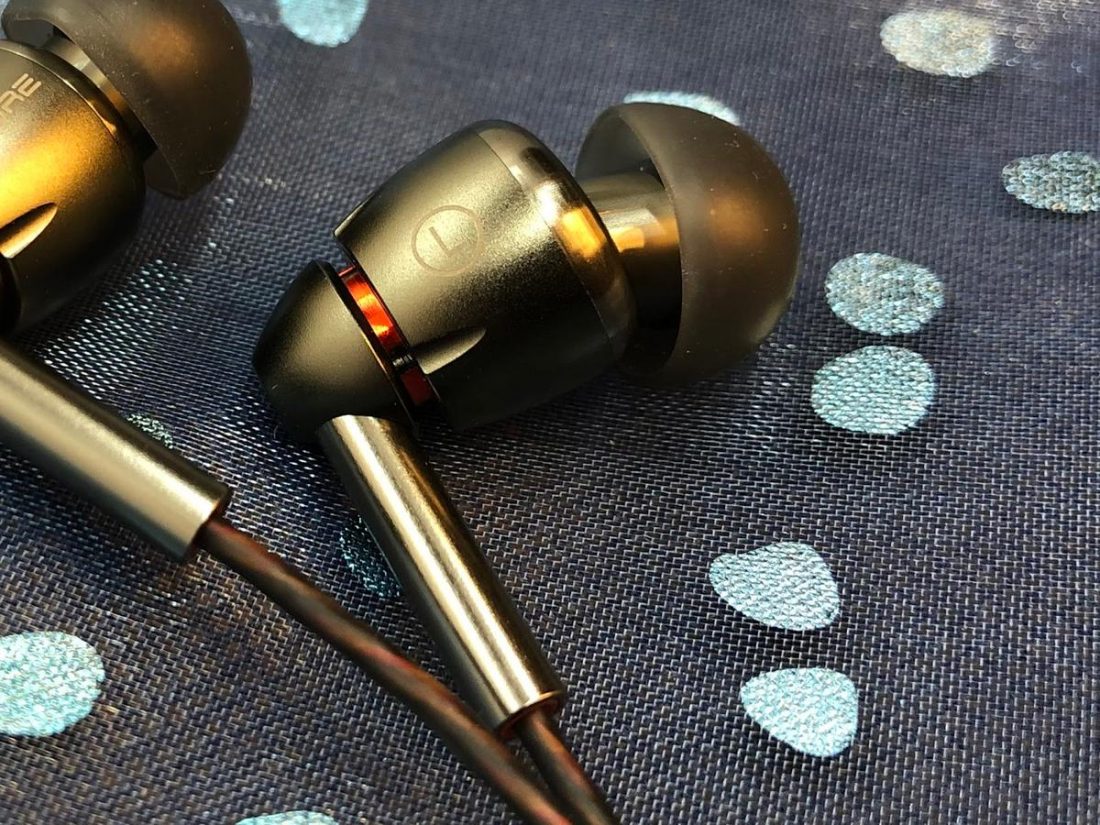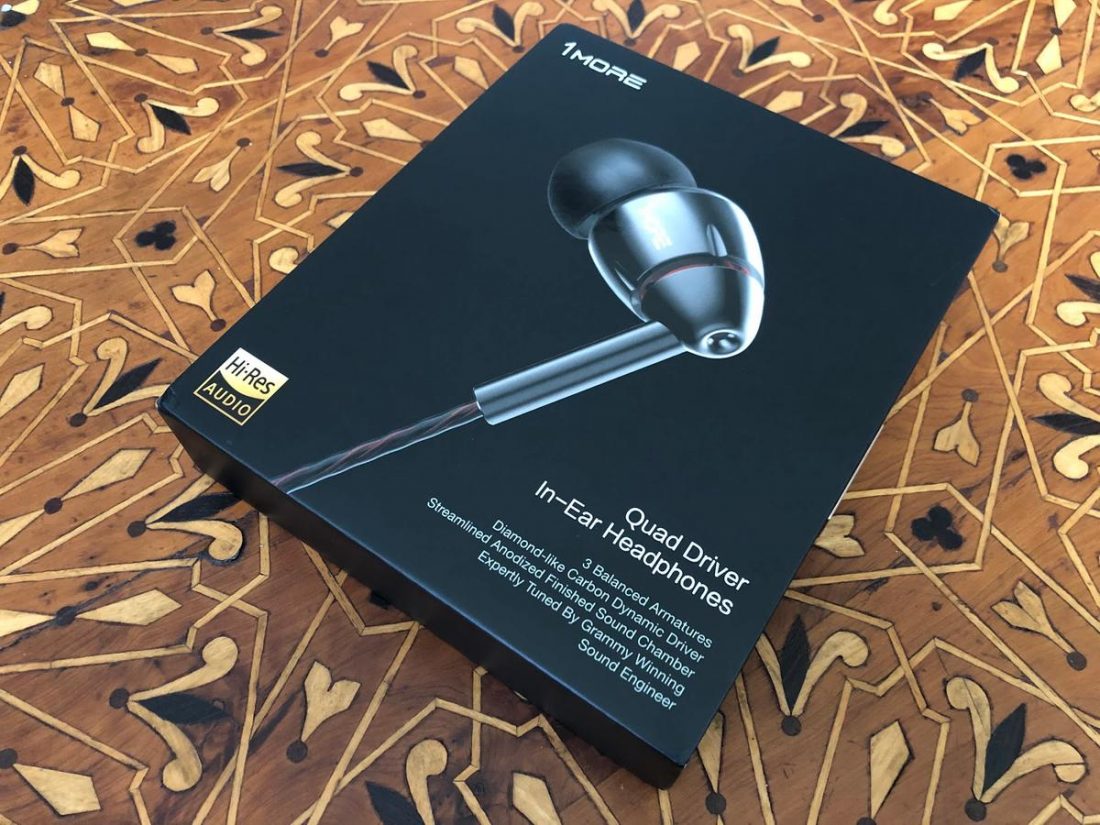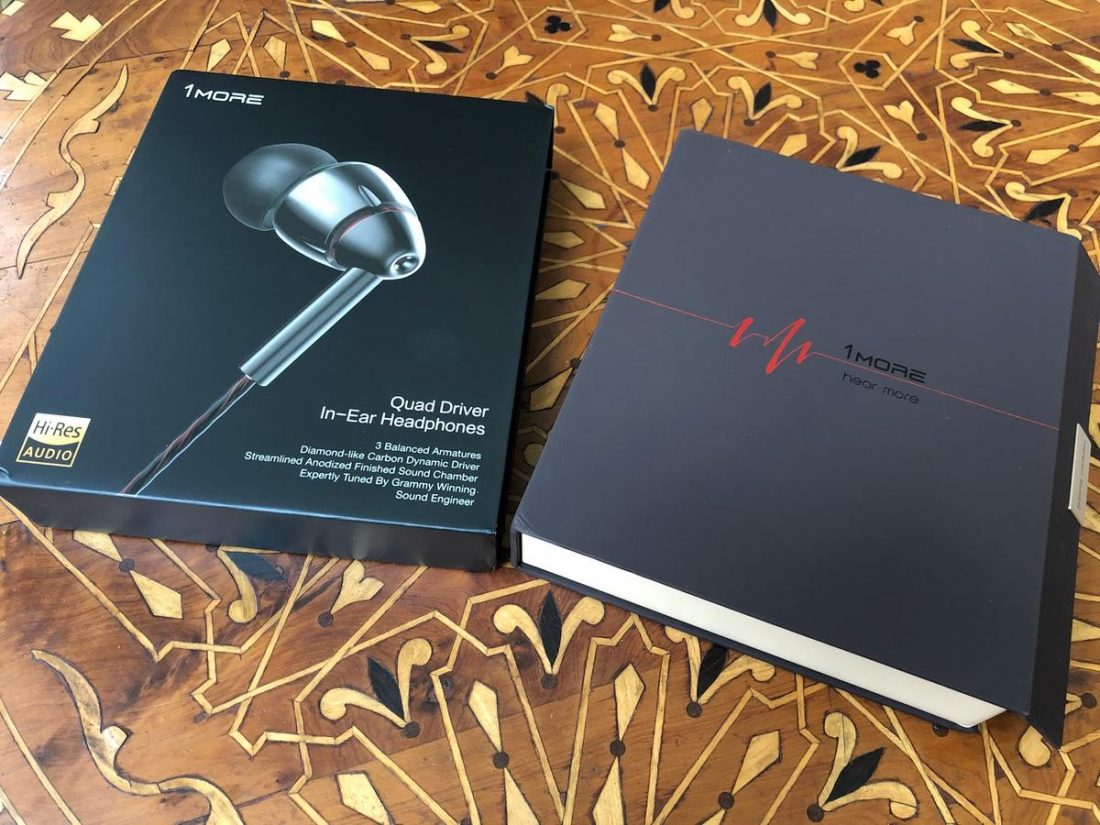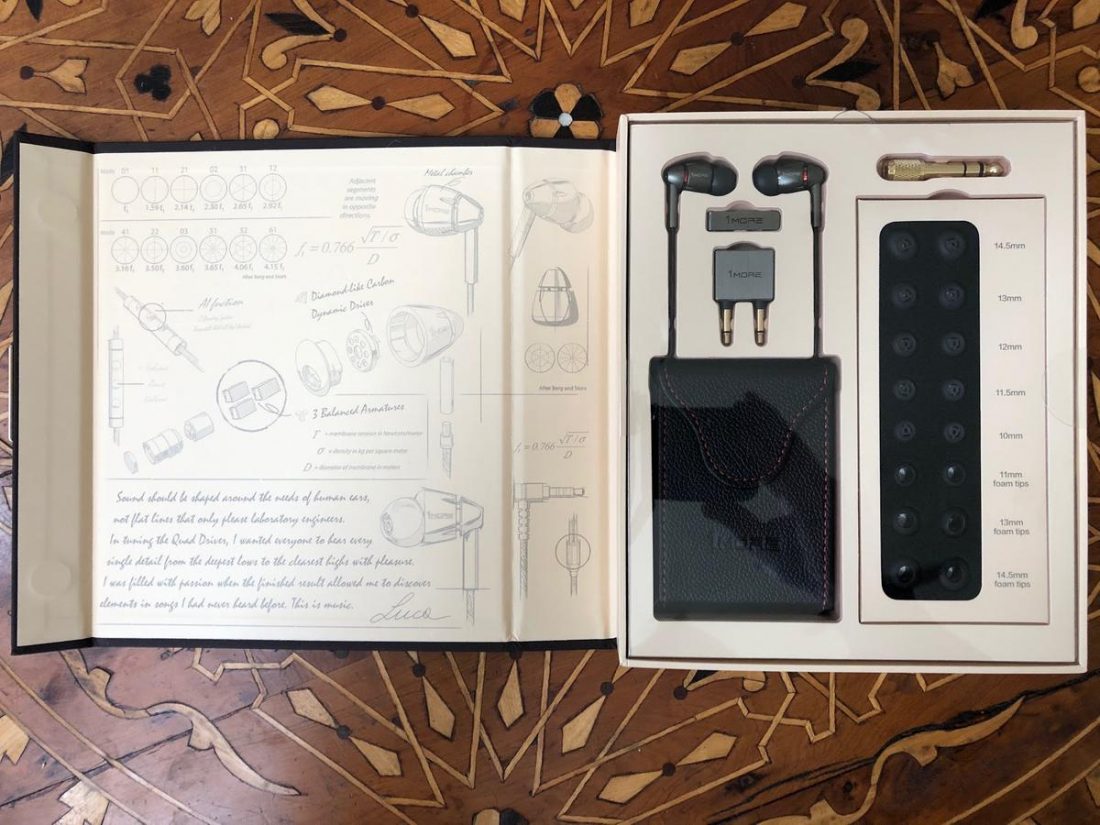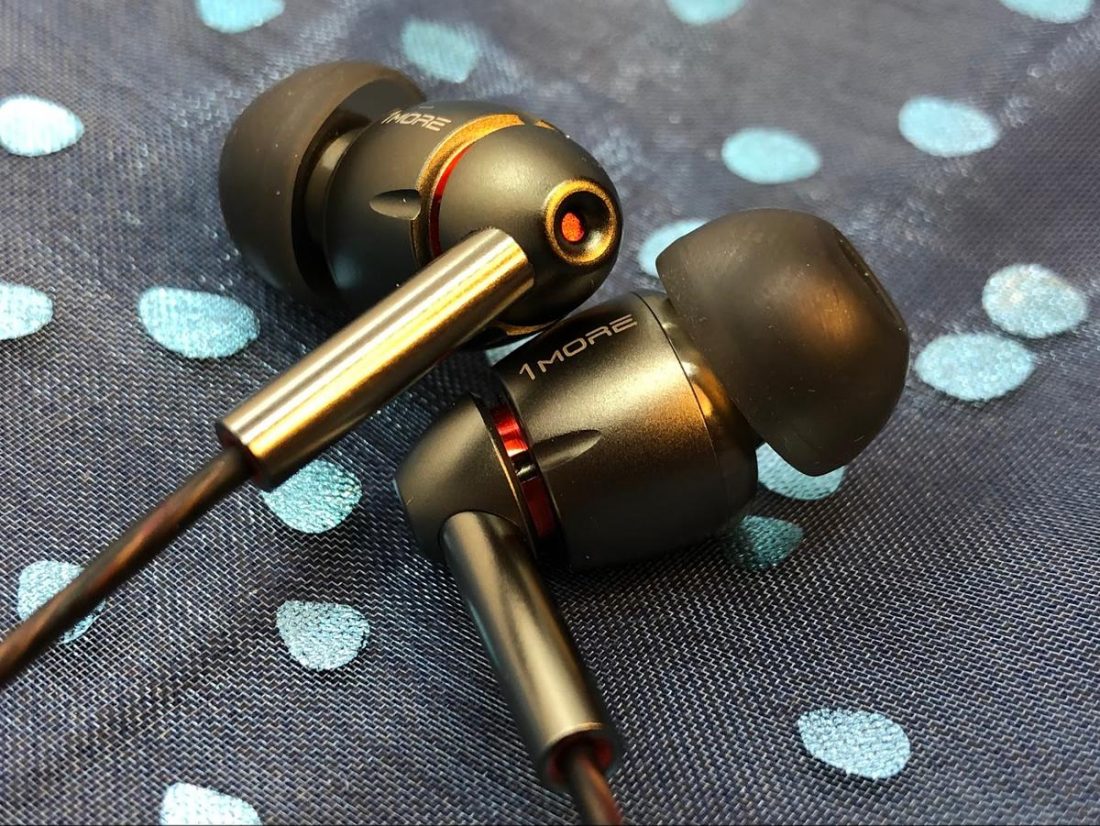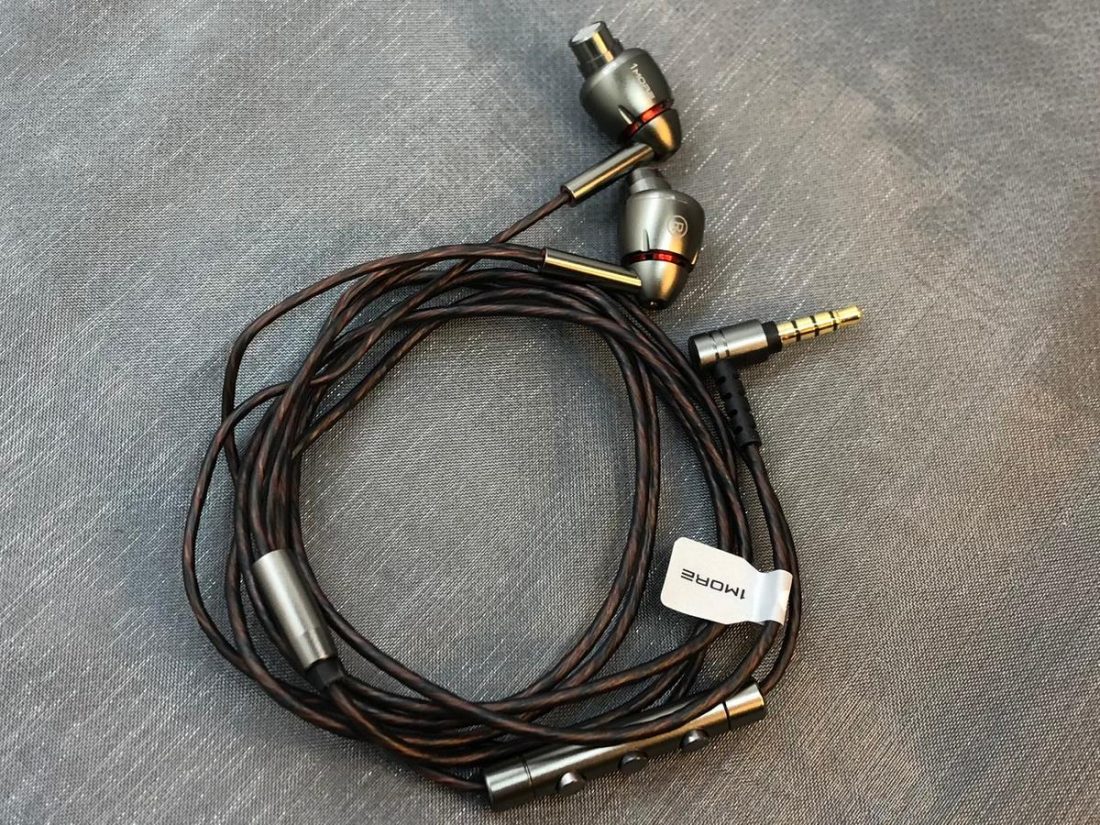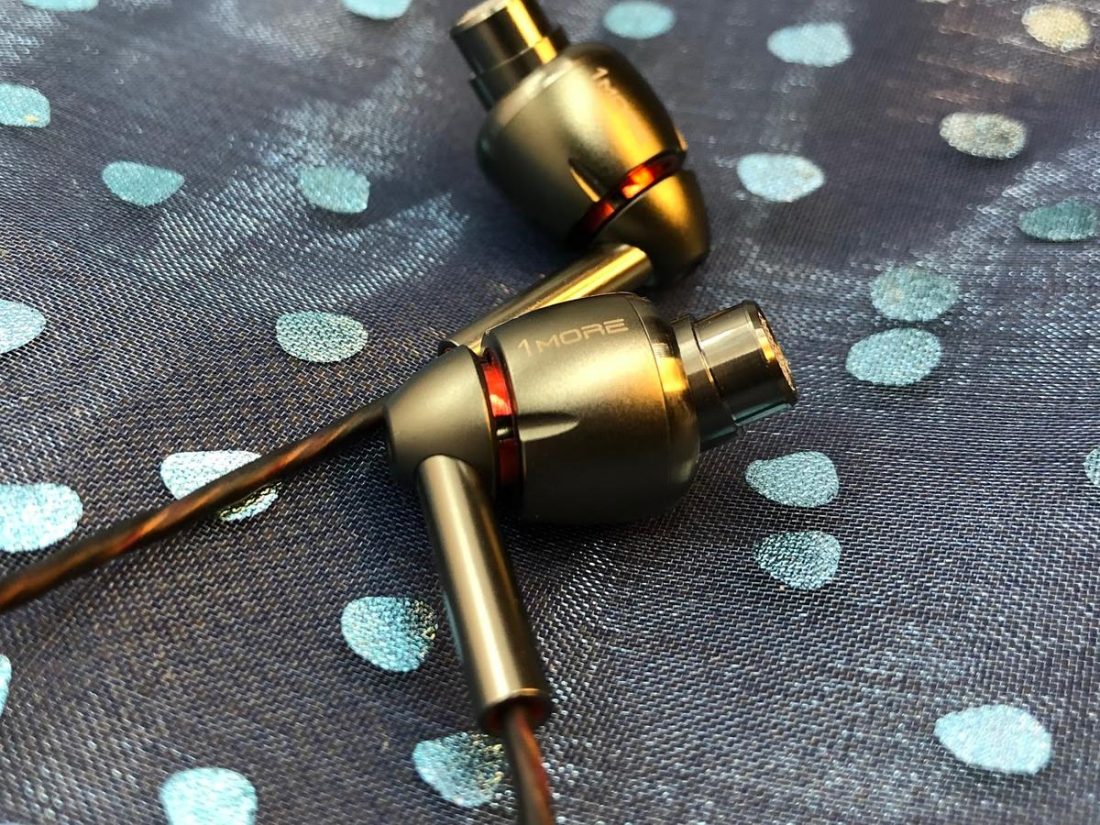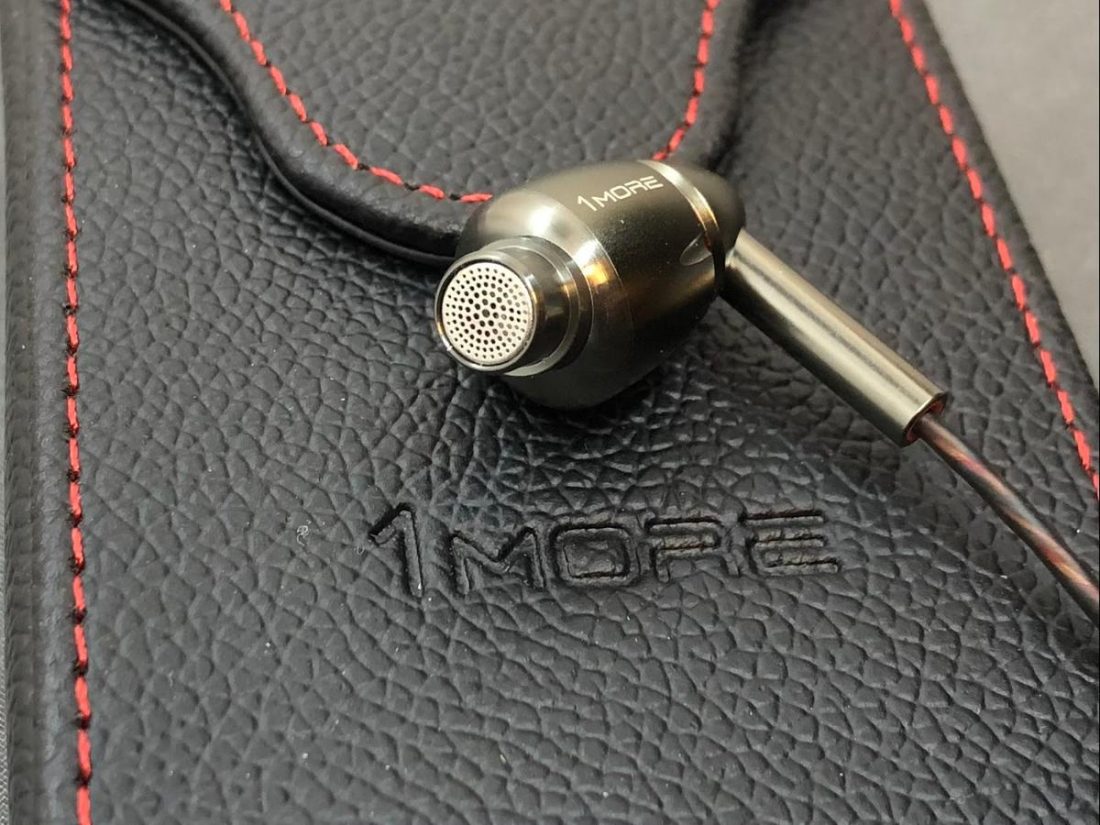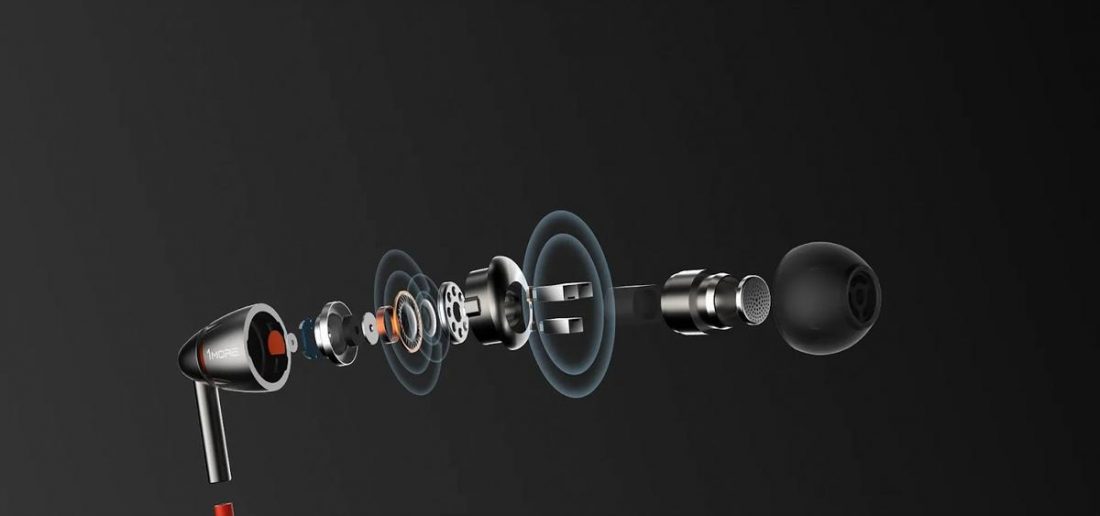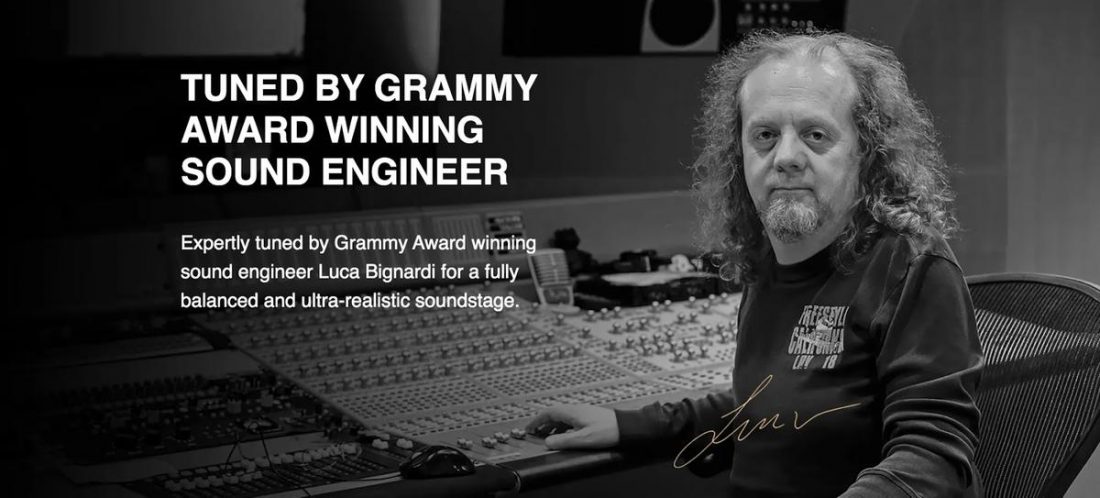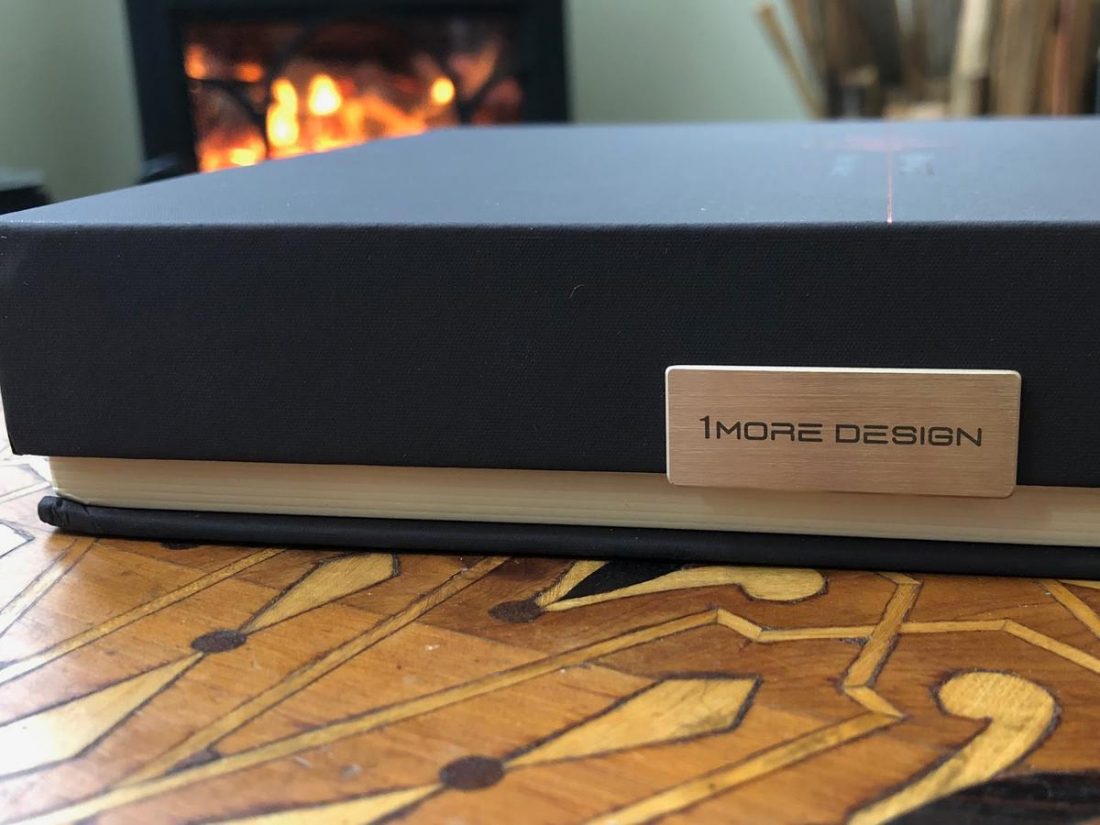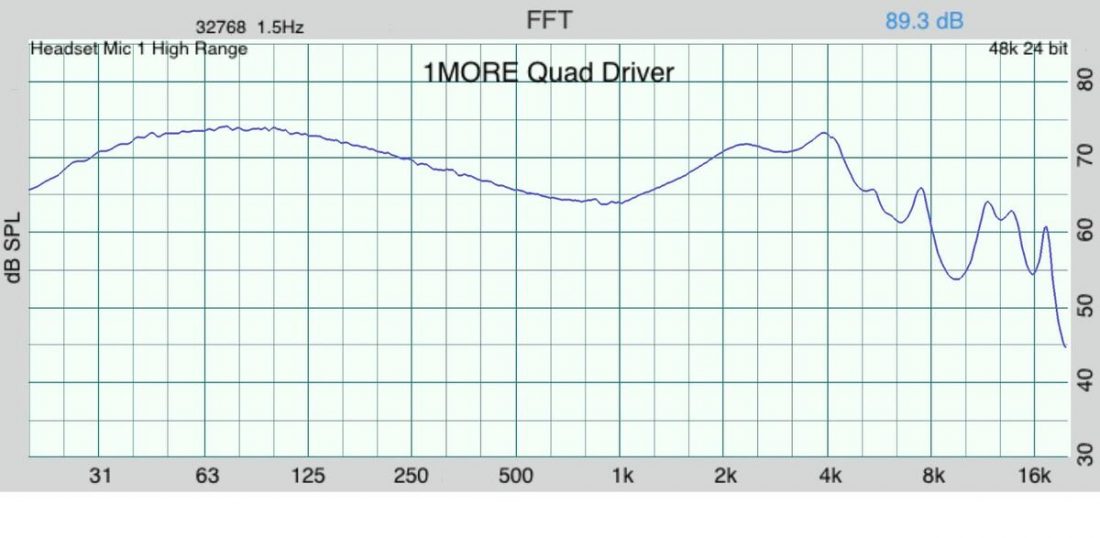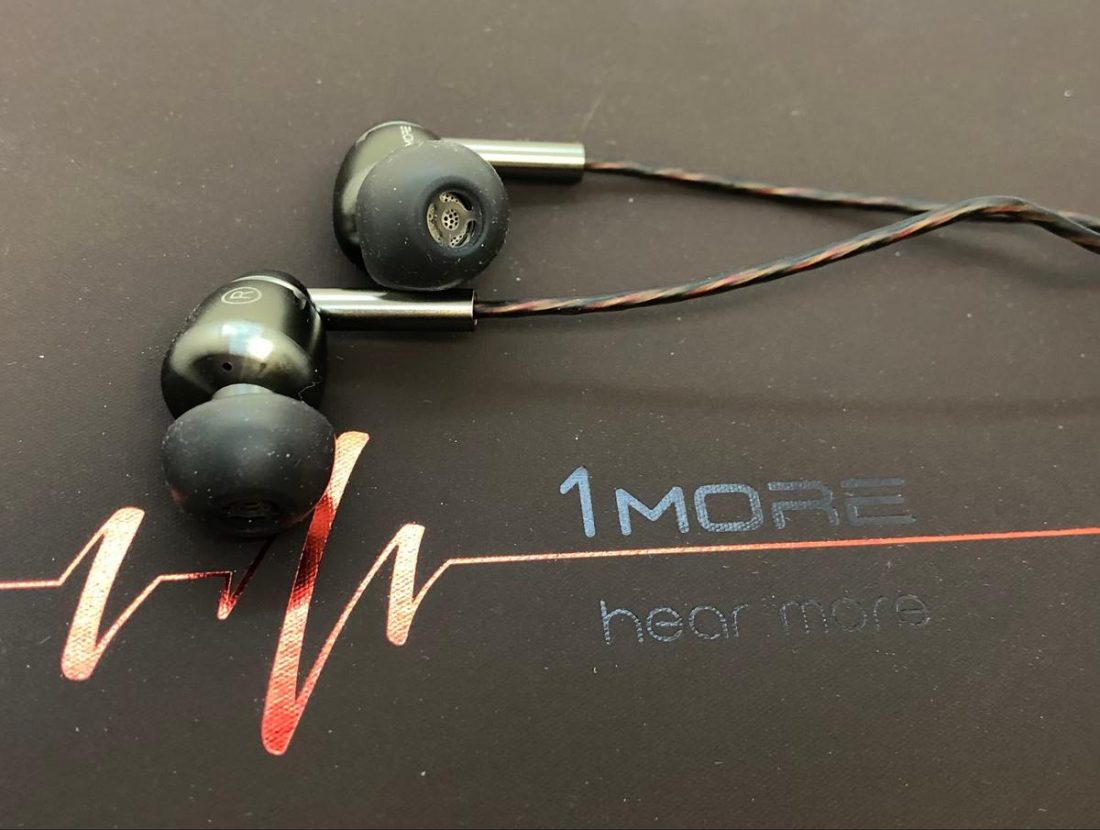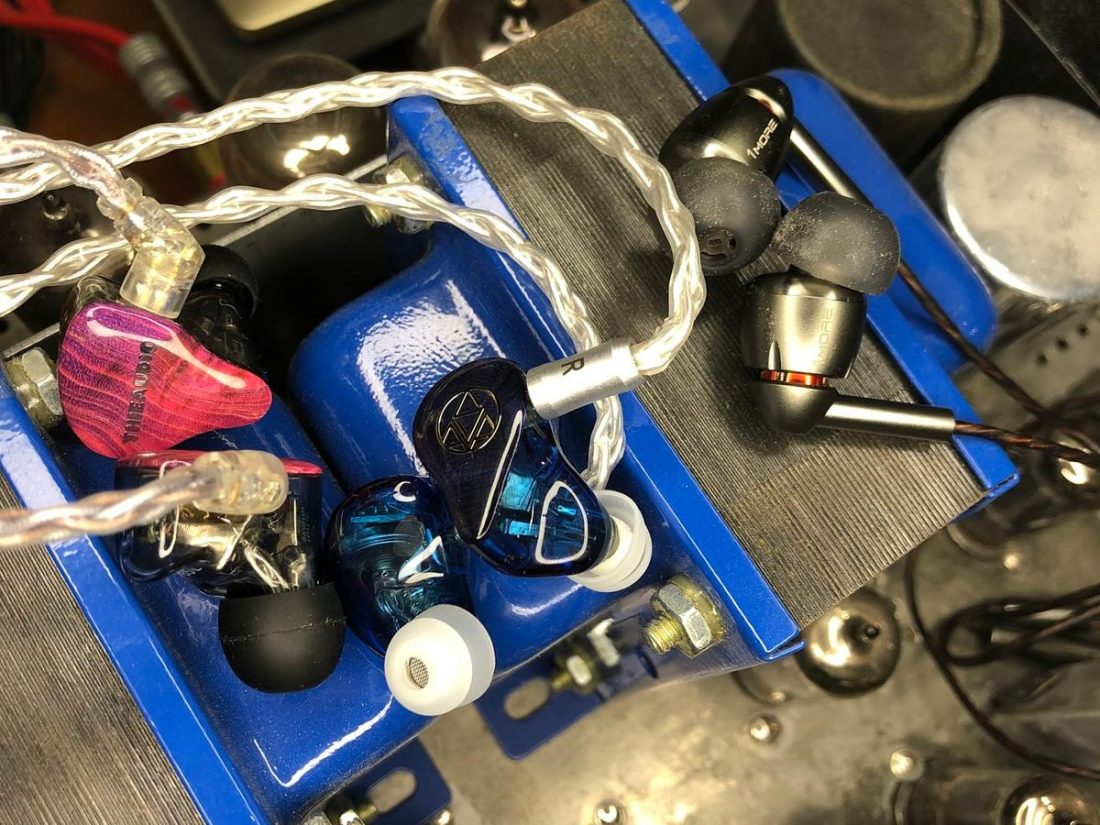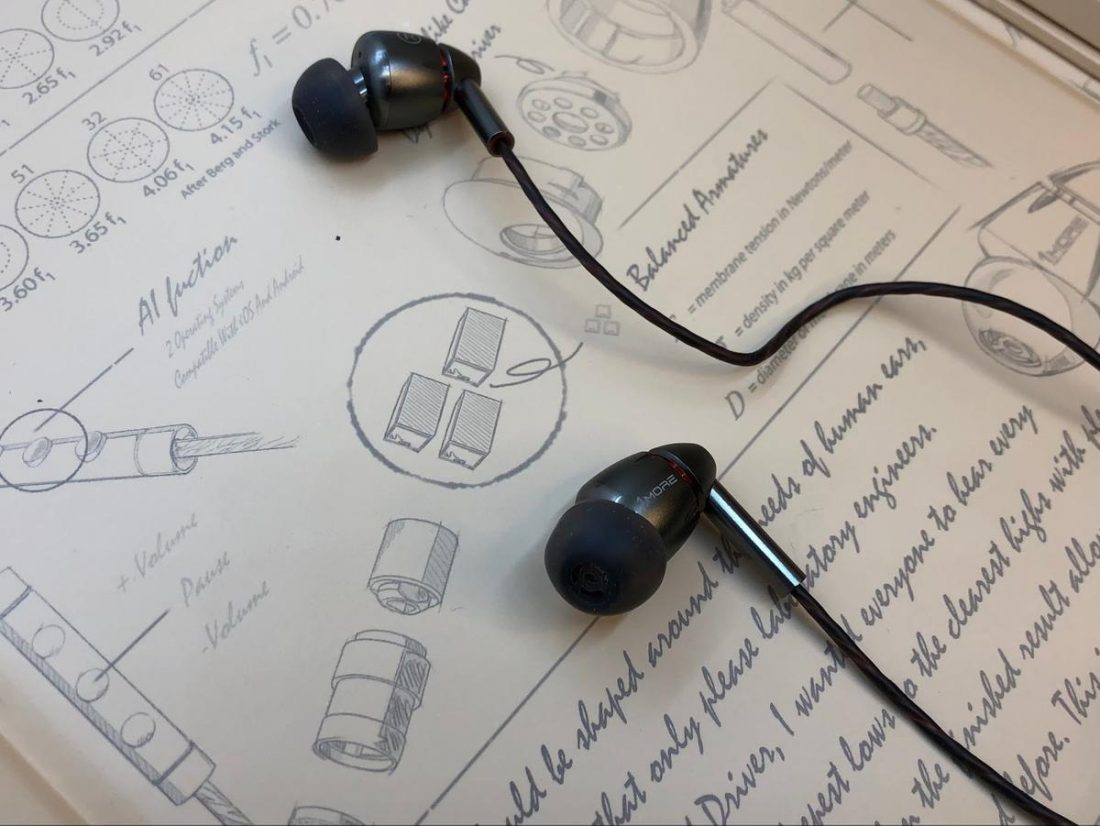The world of Chi-Fi IEMs is an extremely volatile market. Those that follow the headphone trends see more brightly (but briefly) burning super-stars come and go than basically in any other tech market. Seldom do even high-performers remain in the spotlight, and all too quickly, the enthusiasts promptly move on to pursue ‘the next best thing.’ Although, you’ve likely heard of (and remember) some of the classics. Those models that stood out as best in class, offering the best value for your money and the most performance at their price point. Classics like the (still available) 1MORE Quad Driver IEMs. The top performers of yesteryear (like literally only a couple of years ago) may still come up occasionally in discussions. Yet, due to the incredibly rapid evolution of technology and sound quality from China, it’s generally considered that the new always eclipses the old. So, today we’re going to check out if the Quad Driver can still hold their own. The Triple Driver and Quad Driver IEMs were the first two headphones to receive THX certification. Ever. In the history of headphones. To achieve THX accreditation, it was necessary to eliminate phase imbalances between the left and right sides, which sounds easier than (I’m sure) it was to do. 1MORE made several product adjustments to hit this ‘perfect stereo sound’ target. The Quad Driver, as you may have guessed, feature a 4-driver hybrid design per IEM. Each side pairs a PET (polyethylene terephthalate) Mylar dynamic driver with a “diamond-like” carbon coating and three balanced armature (BA) drivers. These were cutting edge technologies a few years back. Now they are found commonly on many relatively inexpensive IEMs. Are the Quad Driver special enough to still compete against newer rivals? Do they deserve to be purchased in 2021? It’s time to find out.
Company Overview
The Shenzhen-based company 1MORE was founded in 2013 by three former Foxconn executives, on the principle that music lovers “…deserve to hear music as it was meant to be heard, as the artist intended it to be heard. Music lovers deserve to HEAR MORE.” 1MORE’s investors include Xiaomi, venture capital firm GGV Capital, and Singapore sovereign wealth fund GIC Private Ltd. After selling over 10 million earphones in China in 2014, 1MORE expanded into the worldwide market. Their channels currently reach 26 countries and regions, including the USA, Canada, England, Germany, Italy, Spain, Greece, Australia, Korea, Japan, Singapore, Malaysia, Indonesia, India, and Vietnam. “1MORE is the most awarded headphone brand two-years running.” – 1MORE
Technical Specifications
Price: USD $170 Form: In-ear Driver: 1x PET dynamic driver with a “diamond-like” carbon coating, 3x BA drivers per side Impedance (Ohm): 32 Sensitivity (dB): 99 Frequency Response (Hz): 20 Hz – 40 kHz Cable: OFC 1.25m – Kevlar Removable Cable: N Source Jack: 3.5mm Mic: Y Weight (g): 18.5
Packaging
Once you’ve opened a few dozen pairs of IEMs, you have an idea of what to expect. It seems to take a lot to surprise me these days and even more to impress me, but that’s just what happened when I opened the Quad Driver packaging. The box is slightly larger than usual and comes in a classy black cardboard sleeve with a high-resolution product photo on the front, and the specs laid out on the back. Inside is a classy brown faux-book style box with a metal magnetic latch. Opening up the book, (charming) interior art of the headphones and accessories rendered in the style of vintage scientific drawings greets you. The box’s interior is molded plastic, holding and displaying the IEMs, storage case, adapters, and a plethora of organized and labeled tips. It conveys quality and care even though it’s the same old materials that everyone else uses. Bravo 1MORE! Give whoever designed this packaging a retroactive raise on me. (Or at least a strong kudos!) The level of attention to detail, thoroughness, artistic design, and class is so far beyond the norm for IEMs (regardless of cost) that I’m genuinely speechless. It’s like… just so… err… umm… meticulous and nice.
In the box
1MORE Quad Driver IEMs 6 pairs of silicone tips (10-14.5mm) 3 pairs of foam tips (11-14.5mm) Hard-sided pleather carrying case Airplane adapter (dual 3.5 mono to 3.5 stereo) 6.35mm to 3.5mm gold plated adapter Metal cable shirt clip Manual
Ear tips
The included selection of ear tips stands out for a few reasons. First, there are nine pairs, organized and labeled in their own little cardboard display box! There are six different sizes of silicone tips (10mm, 11.5mm, 12mm, 13mm, 14mm installed, and 14.5 mm). The silicone tips are non-generic and have a unique design with an inner circle suspended by three silicone pieces. The three pairs of foam tips are sized 11mm, 13mm, and 14.5mm. All the tips are flat-backed and relatively shallow, and I had the best luck achieving a good seal with the silicone tips (in fact, the pre-installed 14mm tips fit my ears well). As always, YMMV. Also, the tips have a large interior bore diameter, so finding aftermarket alternatives may be difficult.
Cable
It’s pretty tough these days to find a pair of IEMs with fixed and downward directed cables. The cables are the only real element that makes the Quad Driver feel less than entirely current. Today’s IEM enthusiasts are often looking for the ability to change cables, either to tailor sound or aesthetics or to support a balanced audio output. So, we’re stuck with the stock cable and terminations. Thankfully, it’s a very nice cable. It’s thin and made of a semi-translucent black rubber (with Kevlar for strength) that allows a glimpse of the red-colored OFC wiring within. It’s also relatively tangle-resistant and non-microphonic. The cable features a tiny, right-angled, aluminum TRRS 3.5mm plug. Rather than a rubber strain relief on the IEM side, the metal body extends about 10mm straight down. The small y-splitter and 3-button inline remote both match the same aluminum construction of the shells.
Design
As noted above, the Quad drivers have a downward exiting cable rather than the currently popular over-ear design. Although this does feel a bit like a throwback, I cannot deny that this scheme simplifies insertion and removal. The all-metal construction and dark grey colorway with red highlights look and feel extraordinarily classy and high-end. Shaped like tiny turbines with small ports on the angled nozzle face, the Quad Driver seem very robust.
Comfort
I’ve gotten used to the size of mega-driver-count, ergonomically-shaped IEMs, so the barrel-shaped Quad appear very small indeed. As a result of the small size and low weight (approximately 2 grams per IEM), comfort is excellent. At first glance, based on their external structure alone, I’d expect them to be merely single driver units. 1MORE accomplished the modest size by positioning the three BA drivers in the nozzle (thus the necessity of large-bore tips).
Internals
While it’s clear that the Quad Driver do contain four drivers (a diamond-like carbon dynamic + 3 balanced armatures), there is a design nuance that 1MORE didn’t initially publicly disclose. The purpose of the extra BA driver in the Quad (over the Triple) is to cancel out unwanted in-ear microphonic noise and distortion. It serves to fill in missing frequencies rather than for full music reproduction. Ari Morguelan from 1MORE described it to me as the “sweeper in soccer,” as it deals with anything that the rest of the driver team has missed. The Quad share the same drivers as the Triple with this distinct enhancement. The BA drivers reside in the acoustic tube (nozzle) to position them as close to the eardrum as possible. Ari explained, “by moving the least amount of air, it reduces the amount of distortion in the ear.” This physical characteristic was crucial for achieving the Quad Driver sound quality and the resulting THX certification.
THX
1MORE is proud of their achievement in being the first headphones that were certified for THX. They broke a barrier and it publicly solidified their products as something special.
Quad Driver Sound Quality
Now with all that technical design and development under the hood, you may be surprised to learn that the 1MORE IEM lineup is tuned by ear. Not just by any ear, but exclusively by the ears of Grammy-winning sound engineer Luca Bignardi. THX engineers complete hundreds of different scientifically-formulated tests to ensure the highest audio standards possible. FREQUENCY RESPONSE Headphones are tested to ensure a well-balanced frequency response with minimal channel imbalance. This allows you to hear all the details in high-resolution tracks, ensures dialog in movies, and vocals in music are clear while maintaining deep, impactful bass output that doesn’t overpower the listening experience. DISTORTION VS OUTPUT The best sound comes from sufficient sensitivity to achieve a premium level of audio output while maintaining minimal distortion at the required sound pressure level. This means your headphones can easily playback content at increased volumes without introducing unwanted noise. ISOLATION Attenuation of external noise is evaluated to gauge the isolation provided by the headphones, making sure they seal in your audio and block out other sounds.” – THX Tuning is 1MORE’s number one priority, and as Ari told me on a call, “Luca tunes everything. It’s a subjective hearing process that combines measuring frequency response and using his ears! Luca goes through 1 kHz at a time and cleans up the distortion based upon his hearing of the sound. You hear what he wants you to hear. It’s a golden ear approach that can’t be duplicated.” That’s all good in theory, but it does come down to how they sound. Doesn’t it? It turns out that the 1MORE sound is firmly in the category of ‘mass appeal.’ 1MORE describes Luca’s tuning as “flat with love.” The Quad Driver are decently tonally balanced, with a slightly dark, mellow v-shaped tuning. The impression is one of balance, with somewhat more low-end extension than high. It’s a non-fatiguing and pleasant sound signature that will (as was intended) appeal to a significant number of listeners. Luca takes this into account, along with several other secrets of acoustic science, to tune our headphones to not only represent things as accurately as possible, but also as pleasantly as possible.” – 1MORE Clarity and detail are satisfactory, if not quite outstanding, but the Quad Driver’s punchy bass, smooth midrange, and lively treble will especially appeal to electronic, pop, and rock listeners. These are a fun set of IEMs and very easy to like. Soundstage and imaging are respectable for this price point. The impression of space and the localization of instruments and vocals are convincing, and distinct elements in the music remain clear and separated. The Quad Driver do not disappoint with their technical performance, regardless of any technological improvements made over the last few years. Although not exceptionally efficient, the Quad Driver do not seem to need fancy or high-end amplification to sound great. Users of the Apple iPhone 3.5mm dongle or smartphones with decent headphone outputs will be able to drive them fine.
Bass
Bass performance is focused more on mid-bass response, with average sub-bass extension, but good impact and texture. The mid-bass is somewhat boosted and (depending on what you are listening to) flirts with a touch of boominess, but for the most part, it remains reasonably tight and controlled. The slightly V-shape tuning is done tastefully, and most listeners will likely appreciate the extra low-end energy. The Quad Driver sound avoids excessive thickness and bloat while imparting a warmth and kick to music. This isn’t the most detailed bass response, and the Quad err on the side of fun rather than obsessive accuracy.
Midrange
Midrange performance is very good, albeit slightly recessed in comparison to the frequency extremes. The boosted higher bass frequencies warm the lower midrange, adding depth if a touch of thickness to vocals. The Quad midrange isn’t overly full-bodied and certainly not forward. Rather it sits somewhat laid-back in the mix. However, the mids remain clear and articulate, and small nuances such as fingers on strings, or the singer taking small breaths, are discernable. Voices have great consistency across the range and a smooth, natural presence. The Quad Driver mids are effortless and even, regardless of what music genre you throw at them. Really quite good.
Treble
Treble response continues the smooth trend of the rest of the spectrum. A couple of small peaks add some vocal and instrument detail, but it remains fairly clear of sibilance and overt crispness. The high-end energy is sufficient to balance the weighty low end, and the extension is just enough to convey a sense of airiness and openness. The impression is one of subdued clarity, and the Quad Drivers feel reasonably articulate, without too much aggression. They have a slightly forward and splashy presentation that engages the listener and creates an enjoyable listening experience. The Quad Driver aren’t the end word in resolution or refinement, but they are more than competent performers at their price point.
Comparisons
I have a couple of recent releases around the Quad Driver price point kicking around, the Thieaudio Voyager 3 ($160) and Mangird MT4 ($199). The Voyager 3 are a three BA driver design, while the MT4 are a similar single dynamic driver and 3 BA design. Both are decent performers and reasonably representative of current technological advancements and tuning. Comparing the Quad Driver to these IEMs illustrated a general tuning trend in Chinese made IEMs. The rather subtle v-shaped tuning of the Quad sounds quite different from both of these alternatives. Overall, the new models are much brighter, with less mid-bass focus and more sub-bass boost. The Quad Driver IEMs hold their own with a dialed down, relaxed signature, which seems to be becoming less the norm as IEM tuning tastes evolve.
Mangird MT4
The MT4 are far brighter. They have a lighter but thinner sound that is much less mellow and potentially more tiring for long listening sessions than the Quad Driver. The clarity and impression of detail seem amped up. The MT4 have more sub-bass extension compared to the Quad Driver prominent mid-bass thump on the low end. The Quad Driver provide a denser and more grounded sound. They are thicker and meatier in their presentation. However, the bass can seem bloomy and uncontrolled in comparison. Vocals still sound natural and clear, and certainly, they are less fatiguing overall. The Quad Driver are somewhat harder to drive. They require approximately 5 more volume + clicks on the Mojo to match.
Thieaudio Voyager 3
The Voyager 3 are more similar sounding to the Quad Driver than are the MT4. However, they are much more efficient to drive (8-10 fewer clicks to volume match on the Mojo). The Voyager 3 do sound somewhat clearer and brighter. The Quad Driver are more laid-back in their sound presentation. They have more energy in the upper midrange and less sub-bass. They provide a flatter sound profile, but not necessarily in a bad way. Their mid-bass boost adds warmth and ease to listening. However, they may require a slightly louder listening volume than your norm to seem as resolving as these other options.
Where to Buy
Conclusion
Things change over time. Technology improves. Trends come and go. Fashion evolves. But that doesn’t mean that something that was great has declined. Sure, there may be more alternatives vying for consumer dollars, but truly good things still stand out. Behold the mighty 1MORE Quad Driver, alpha predators of times gone by, the mighty Tyrannosaurus of the IEM world. But if the Jurassic Park sequels have taught us anything, it’s that although there may be newer, bigger, meaner dinosaurs chasing the paleontologists and children, that old guy Rex still packs a mighty bite. The 1MORE Quad Driver bring something different to the 2021 table. Their sound. Tuning by a Grammy-winning professional adds something special. In this case, it means a fun, mellow, and musical sound signature. It’s a signature that sounds different than the current boosted V-shape or Harman tuning trends. From packaging to construction, the Quad Driver differentiate themselves from the ever-changing IEM landscape. Clearly, they were designed and built with care by a company that worked diligently to receive the first THX certification. The Quad Driver deserve to be contenders still. They patiently watch current ‘flavor-of-the-week’ IEMs come and quickly go. Yet they remain. It’ll take far more than a couple of upstart Raptors to take them down.


